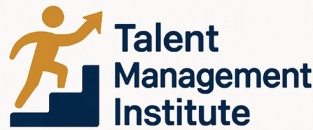
Understanding the Role of Document Management in HR
HR Document Management as a Cornerstone of Talent Management
In the modern workspace, the way human resources manages documents plays a critical role in talent management. HR departments handle a vast array of documents, such as employee files, performance reviews, and compliance data, which need systematic storage and retrieval. Efficient document management is essential for ensuring that employee documents are easily accessible when needed. This process not only helps save time but also improves the overall management of employee records, fostering a seamless experience for both HR professionals and employees. Employing a digital document management system can alleviate many of the traditional challenges associated with physical document storage, such as misfiled or lost documents. An integrated document management system embodies features like secure storage and automated workflows. These features ensure data security and compliance, which are imperative for managing sensitive employee information. Software solutions offering such functionalities enable businesses to streamline their HR processes, granting authorized personnel quick access to necessary information. Incorporating a cloud-based system offers the added advantage of remote accessibility. HR personnel can access documents anytime and from anywhere, which is invaluable in today’s digital-first environment. This flexibility can significantly enhance employee satisfaction and productivity. For further insights on HR document management, consider exploring the role of Jeff Smith in human resources.Key Challenges in Managing HR Documents
Identifying Common Obstacles in HR Document Management
Managing HR documents effectively is crucial for any business, yet it comes with its own set of challenges. One of the primary issues is the sheer volume of employee documents that need to be handled. From employee records and performance reviews to compliance documents and contracts, the amount of paperwork can be overwhelming. This is where a robust document management system becomes essential.
Challenges in Accessibility and Organization
Another significant challenge is ensuring that these documents are easily accessible while maintaining their organization. Employees often need quick access to their files, and delays can lead to frustration and inefficiency. Implementing a file management system that allows for seamless access to digital documents is vital. This not only improves employee experience but also enhances overall productivity.
Ensuring Data Security and Compliance
Data security and compliance are critical concerns in HR document management. With sensitive employee data stored digitally, protecting this information from unauthorized access is paramount. A secure document storage solution that includes features like automated workflows and data encryption can help mitigate these risks. Moreover, adhering to best practices in compliance ensures that the business remains in line with legal standards, avoiding potential penalties.
Transitioning to Digital Solutions
The shift from physical to digital document storage presents its own set of challenges. While digital solutions offer benefits like cloud-based storage and streamlined processes, the transition requires careful planning and execution. Businesses must invest in reliable document management software that supports their specific needs, ensuring that employee files are stored securely and can be accessed with ease.
For more insights on navigating these complexities, explore the role of experts in human resources.
Implementing Effective Document Management Systems
Implementing Robust Solutions for Document Management
To ensure an effective talent management system, businesses need to implement a robust document manager solution that offers a comprehensive approach to handling employee documents. This involves using management software that facilitates efficient access and organization of employee files, while ensuring data security and compliance.
- Utilize Digital Document Solutions: Transitioning to a digital document system optimizes storage and retrieval of files, enhances file management, and allows for cloud-based access to employee records.
- Automated Workflows: Adopting automated workflows in document management streamlines processes, saves time, and minimizes human error, thereby improving the overall efficiency of the HR department.
- Secure Storage: Ensuring that employee files are stored in a secure manner is paramount. Utilizing advanced document storage solutions that offer both encryption and access controls helps protect sensitive data from unauthorized access.
- File Organization and Accessibility: A well-organized management system allows for easy access to necessary documents, critical for performance reviews and regular HR operations.
These measures, combined with best practices for compliance and security, form the backbone of a successful document management strategy. Implementing such systems not only optimizes the management of employee documents but also significantly enhances the employee experience by providing timely and efficient access to their records.
Enhancing Employee Experience through Document Management
Elevating Employee Engagement via Document Management
In today's digital-driven age, managing employee documents efficiently is key not just in streamlining HR processes, but in enhancing the overall employee experience. An effective document management system can notably reduce time spent on administrative tasks, allowing HR teams to focus more on strategic practices that foster employee engagement and development. Efficient document management begins with secure document storage solutions that not only safeguard employee records but make data easily accessible to relevant personnel. For example, implementing cloud-based document storage enhances access to employee files, ensuring that whether it's a performance review or compliance-related file, it can be retrieved quickly and securely - thus, minimizing disruptions in HR operations. Moreover, investing in document management software with automated workflows supports timely and accurate processing of employee documents. Such software often includes features that enable staff to access documents remotely, promoting a flexible working environment. By reducing the burden on employees to search for misplaced files, the system directly contributes to a more focused and motivated workforce. Also, an effective system acts as a champion of data security, shielding sensitive employee information from unauthorized access. By adhering to best practices, such as regular audits and encryption, businesses can boost their compliance with data protection regulations, further enhancing employees' trust in the organization's management protocols. Incorporating advanced file management solutions and cohesive digital processes will undoubtedly set the stage for a more integrated and employee-friendly HR environment, further reinforcing the importance of document frameworks in enhancing the workplace experience.Leveraging Technology for Better Document Management
Integrating Technology into Document Management
The integration of technology into document management offers a multitude of advantages for businesses seeking efficiency and security in their human resources processes. By adopting management software, organizations can effectively manage documents, enhancing both compliance and employee satisfaction.
One of the significant merits of using modern management systems is the efficient use of time and resources. Employees can easily access documents, including employee records and performance reviews, through a cloud-based system, reducing the hours spent searching for files while promoting productivity. Automated workflows streamline these processes further by facilitating immediate updates and notifications, ensuring that information is current and accurate.
Data security is paramount in today's digital landscape. Robust document management software incorporates features such as secure storage and controlled access to sensitive employee files. Such systems offer encryption and access controls, ensuring that employee documents remain confidential and protected against unauthorized access.
Implementing a digital document management system is not solely about convenience; it is about enhancing business operations. With the right software, organizations can achieve seamless integration of document management into their existing systems, paving the way for improved compliance and document storage solutions. This proactive approach ensures that businesses are always prepared for audits and can readily demonstrate adherence to best practices and regulations.
Ultimately, leveraging technology for document management not only addresses immediate challenges but also fosters a secure and efficient HR environment. As organizations continue to adapt and evolve, the strategic use of technology remains crucial in managing employee files and accommodating future business needs.
Best Practices for Maintaining Compliance and Security
Maintaining a Robust Framework for Document Integrity
Ensuring proper compliance and security in human resources functions can seem daunting without the right strategies in place. Amid growing concerns about data privacy and streamlined operations, adhering to best practices is essential for any business striving for excellence in talent management.
Implement a Comprehensive Security Protocol
Developing airtight security measures is crucial for protecting sensitive employee data. By using advanced digital solutions, such as cloud-based management software, companies can secure employee files and access documents with confidence. To bolster security, these systems often offer features like encrypted storage and access control, ensuring that only authorized personnel can access sensitive records.
Stay Ahead of Regulatory Compliance
In the realm of human resources, compliance is an ever-evolving target. Businesses can mitigate risks by leveraging file management systems that automatically update to adhere to the latest regulations. Additionally, keeping an eye on the regulatory landscape facilitates proactive planning, which helps avoid fines and legal ramifications.
Develop Effective Document Tracking Systems
Empowering organizations with automated workflows not only reduces operational time but also adds another layer of oversight. Automated tracking functions provide real-time insights into document access and modifications, creating a verifiable audit trail that supports transparency and accountability. Such features are indispensable in ensuring compliance and protecting against unauthorized activity.
Train Your Workforce
A knowledgeable workforce is a powerful ally in safeguarding against non-compliance and security breaches. Conduct regular training sessions to emphasize the importance of data security and best practices. This prepares employees to handle documents with care and attention, minimizing potential liabilities.













